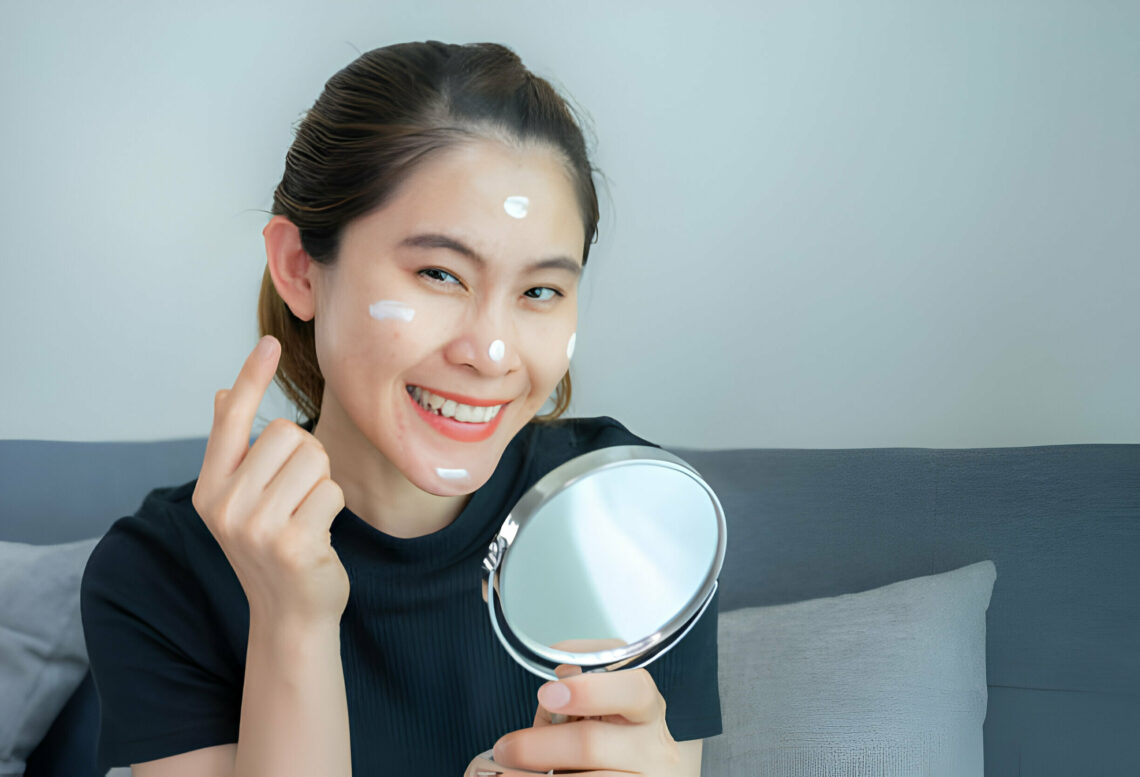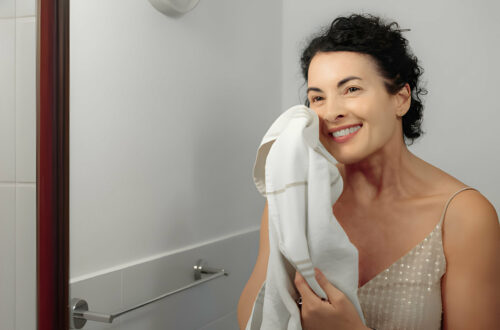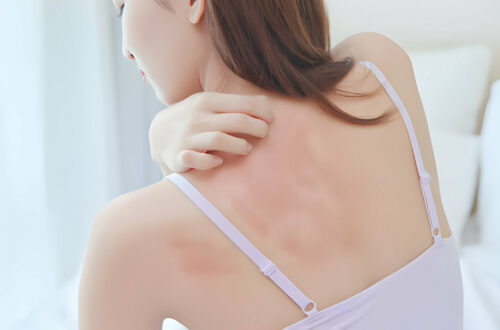The Top Skin Care Routine to Combat Acne, as Recommended by Dermatologists.
Acne isn’t just a problem for teenagers. Even if it’s been many years since you were in high school, you might still wake up with a red pimple on your nose or some whiteheads on your cheeks. The battle against blackheads, whiteheads, pimples, and even cystic acne can continue into menopause. However, by using the right acne products and sticking to a consistent skincare routine, especially concerning skin care during menopause, you can achieve clearer skin.
“I see people in their 30s, 40s, and 50s coming to my office with acne,” says Dr. Debra Jaliman, a dermatology assistant professor at Icahn School of Medicine at Mount Sinai and author of the book “Skin Rules: Trade Secrets From a Top New York Dermatologist.” “I assure them that we can definitely manage it, but it’s like exercising – you need to stick to your routine every day.”
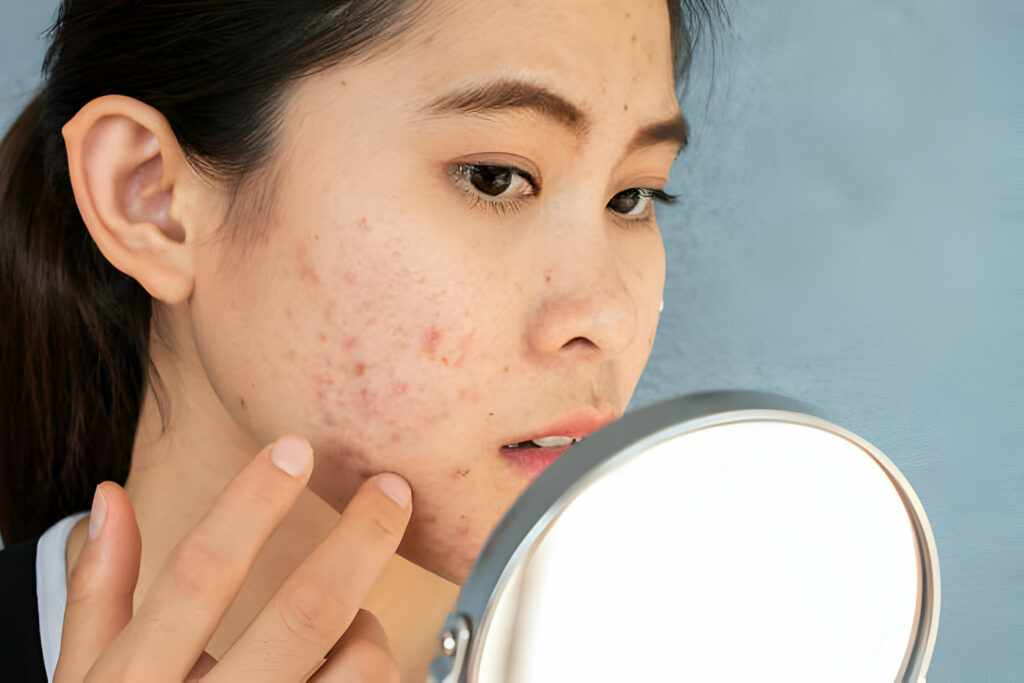
With the overwhelming variety of products claiming to deeply clean your skin and eliminate acne forever, it can be hard to find a simple, effective system. That’s why we asked three top dermatologists to break it down for you.
What’s acne and how does it happen? Your skin has lots of tiny glands that make an oil called sebum. This oil is there to protect your skin and is connected to hair follicles all over your body. Sometimes, things can go wrong and the oil can’t come out of the follicles like it should. Hormones can make these glands produce too much oil, which can then mix with dead skin cells and block the pores. This is what causes acne.
When you become a teenager and go through puberty, your hormones can go wild and start this process. But even as an adult, you can still have acne because of hormones. Dr. Howard Sobel, a dermatologist, says that things like pregnancy, your monthly cycle, and using certain types of birth control can make your body produce more oil, leading to pimples. Stress can also make your body produce more oil and cause pimples.
Sometimes, your pores can get clogged because of irritation or a reaction to things like products or fabrics (even masks), particularly concerning skin care for rosacea and acne skin care routine. Dr. Sobel also says that too much yeast in hair follicles, especially on the upper chest and back, can cause acne-like breakouts. Some medicines, like corticosteroids, can also lead to acne. Dr. Jaliman adds that having too much dairy in your diet might be a factor too. The best way to figure out why you’re having breakouts is to talk to a dermatologist.
Once those tiny openings in the skin get blocked, they can cause different types of acne, such as:
- Whiteheads: These appear when too much oil and dead skin cells block the opening. They look like small bumps that can be flesh-colored or white.
- Blackheads: These are like whiteheads, but when the stuff blocking the pore is exposed to air, it turns black.
- Pimples: These are the familiar red spots that show up when bacteria gets stuck in the pore along with oil and dead skin. This causes inflammation.
- Cystic acne: These bumps are hard and painful. They can feel like a small ball under the skin. They happen when oil, dead skin, and bacteria go deeper into the skin.

The Perfect Skin Care Routine to Stop Acne Start by checking all the products you put on your skin and hair, even makeup, advises Dr. Jaliman. She says, “The main mistake I notice in people’s acne routines is using too many products without looking at the ingredients on the labels.” Make sure the products you use have words like non-comedogenic, non-acnegenic, or oil-free. These mean that the products don’t have ingredients that can cause pimples or oiliness.
Next, stick to these six daily steps that dermatologists suggest:
Step 1: Be Gentle When Washing Your Face Even though you might want to scrub your face really hard like you’re cleaning muddy shoes, that can actually make things worse, says Dr. Elyse M. Love from Spring Street Dermatology in New York. “People often think that acne happens because there’s too much dirt or oil on the skin. So, they try to wash and scrub too much,” she says. “But acne is caused by inflammation, so washing too much can make the skin irritated and make the problem worse.” Dr. Sobel adds, “It’s important not to remove too much from your skin. Doing that can damage the skin’s protective layer, and that can cause more breakouts, irritation, redness, and make your skin not smooth and even.”
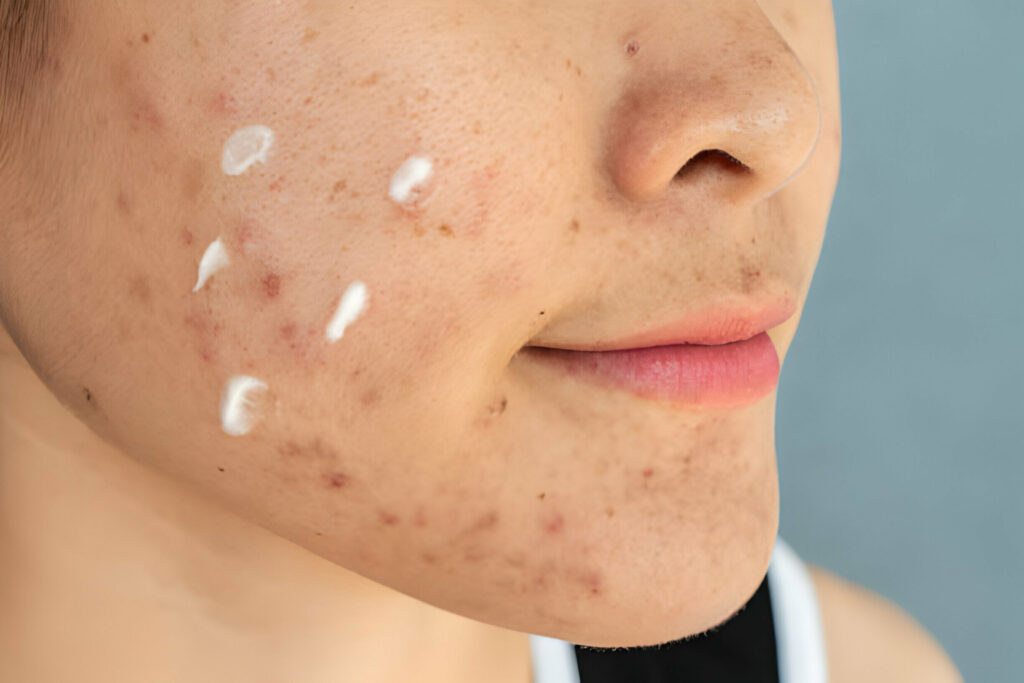
All three skin doctors I talked to suggested using a gentle foaming cleanser when you wake up. But you have a choice: If you want to put on a spot treatment by itself — or your doctor told you to use a special acne medicine — then use a mild cleanser that doesn’t have medicine in the morning, like Neutrogena Ultra Daily Face Wash for Sensitive Skin.
But if you want to do both steps at once, go for a foaming cleanser that fights acne. If you have whiteheads or blackheads, look for a cleanser with salicylic acid. It helps get rid of the top damaged skin layer and clears away dead skin cells before they can block your pores (try Medik8 Clarifying Foam, which also has antibacterial tea tree oil). If you have red, puffy acne, use a cleanser with benzoyl peroxide. It fights surface bacteria (CeraVe Acne Foaming Cleanser has benzoyl peroxide, niacinamides, and ceramides, which Dr. Jaliman says is good for skin that’s both oily and dry; or try PanOxyl Foaming Wash with 10% benzoyl peroxide).
Remember that how you use the cleanser is just as important as the cleanser itself. Get rid of rough washcloths, sponges, or anything else that might irritate your skin. Dr. Jaliman says to use a cotton pad or a soft baby washcloth to put on the cleanser. But use a clean washcloth each day, so you don’t put old dirt on your face again. You can even use your hands, splashing enough water to wash off the cleanser, says Dr. Love. But she says to only use lukewarm water, because hot water can bother your skin. After you rinse, Dr. Sobel says you can use a splash of cool water to balance, tighten, and refresh your skin.
Step 2: Use Acne Treatment If you used a simple cleanser in the first step, now is your chance to try something stronger for specific spots. After washing, let your skin dry – pat gently with a soft towel instead of rubbing. Then, try a treatment that you can buy without a prescription. You could use CeraVe Salicylic Acid Acne Treatment Gel or La Roche Posay Dual Action Acne Treatment.
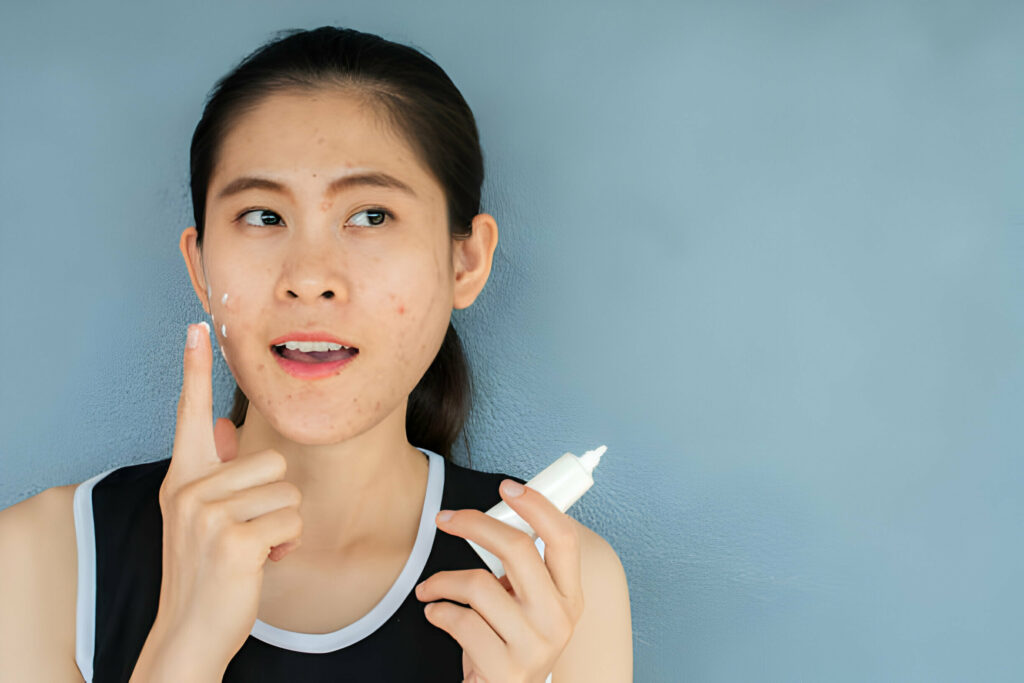
It might take around six weeks for the treatment you buy without a prescription to start working, according to the experts. If you still don’t see any changes after this time, it’s a good idea to talk to a dermatologist. They can give you a stronger medicine, like Dapsone gel. Dr. Love has a smart idea: “If you live in a place where it takes three months to get an appointment with a dermatologist, make the appointment as soon as you start using the non-prescription products from the store as a backup plan,” she suggests. “You can always cancel it if you don’t need it!”
Step 3: Use a Light Moisturizer Even if you worry about your skin being oily and pores getting blocked, using moisturizer is important. It might seem like you don’t need it, but it’s actually the opposite: “Moisturizers help keep the skin’s oil in balance,” says Dr. Love. “They also help people with acne handle their acne medicines, which can often dry out the skin. The trick is to use moisturizers that don’t have oil and won’t block your pores.” One moisturizer that Dr. Love likes is La Roche Posay Double Repair Face Moisturizer. Dr. Jaliman suggests using a moisturizer with aloe and hyaluronic acid, which helps protect the collagen in your skin. A good choice is Fresh Rituals Aloe Vera Moisturizer. Other good options that won’t block your pores include Cetaphil Gentle Clear and Aveeno Clear Complexion. Both of these have a little bit of salicylic acid.
Step 4: Remember Sunscreen Don’t forget that sunscreen is really important to protect your skin from the sun’s damage. But if you have skin that gets acne, it’s best to choose a sunscreen that won’t block your pores or make your breakouts worse, particularly concerning skin care for hyperpigmentation. Dr. Jaliman suggests using EltaMD UV Clear Broad Spectrum SPF because it has niacinamide, which helps with redness. Another good sunscreen recommended by experts is La Roche Anthelios SPF 60 Dry Touch Clear Skin Sunscreen, which feels light on your skin.
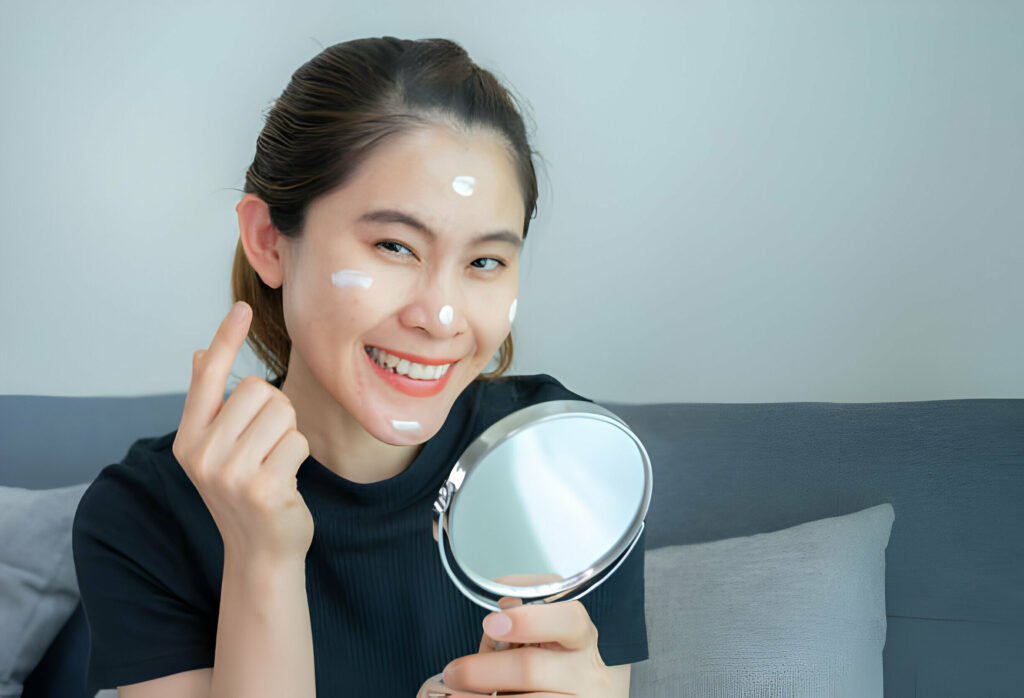
Step 5: Clean Your Face Again at Night – when you clean your face, you want something that can gently get rid of the makeup, oil, and stuff your face picked up during the day. Dr. Sobel suggests using a gel-based cleanser without harsh chemicals, like Vichy NormadermPhytoaction Daily Deep Cleansing Gel. It has salicylic acid and is liked by the GH staff. If you like to use a toner next, make sure it doesn’t have oil in it, says Dr. Jaliman. You can check out the list of the best toners for skin that’s prone to acne. Dr. Love also suggests doing a double cleanse. First, use micellar water – you can try ones from Avene, Garbier, or Bioderma – then use your cleanser.
Step 6: Use Retinol Before you go to sleep, there’s one more thing you should do to get clear skin: put on a retinol product. What’s retinol? It’s like a less strong version of a skin medicine called Retin-A. Retinol helps with wrinkles and, importantly for acne, it clears out pores. “Retinol is great for grown-ups with acne,” says Dr. Sobel. “It helps your skin make new cells faster, removes old cells, and cleans out the very top layer of skin. It also clears your pores and keeps your skin looking young while also stopping fine lines and wrinkles.” Three you can try are DifferinAdapalene Gel, La Roche-PosayEffaclarAdapalene Gel, and Sobel Skin 4.5% Retinol Complex Night Treatment. Dr. Sobel says you should start slowly with any retinol product. “Use it one or two days a week to get used to it and avoid bothering your skin,” he says. “Slowly, you can use it four times a week, and then every day if you need to.”
